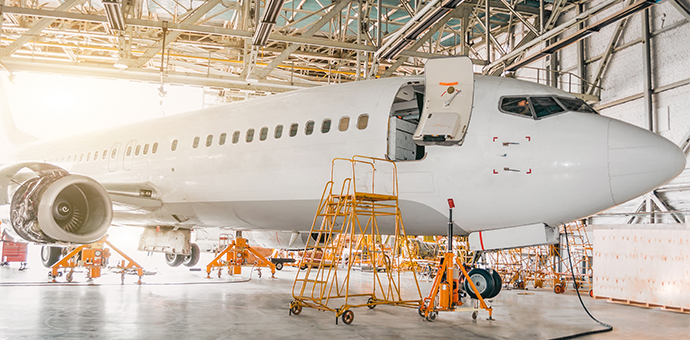Optimising Lighting for Aircraft Inspection – General Visual & Detailed Visual Inspections – Review by Sofema Aviation Services (SAS) www.sassofia.com
Introduction to Performing Effective Inspection
It is extremely important to ensure maintenance is conducted under proper lighting conditions. This is true both for area lighting, that which illuminates the full working area, and task lighting, that directed toward specific work activities. Improper or insufficient lighting can lead to mistakes in work tasks or can simply increase the time required to do the work.
Please consider the No 1 lighting challenge which we face when performing an effective Aircraft Inspection – GLARE !
Glare is the loss of visual performance or discomfort produced by an intensity of light in the visual field greater than the intensity of light to which the eyes are adapted.
Glare may come directly from a light source or be reflected.
Note – Reflected light from bright sources produces glare which can both cause discomfort and reduce visibility of key features of the maintenance task.
The glare tends to obscure or mask part of the visual task.
Types of Glare
There are two types of glare – direct and indirect. Direct glare occurs when people look directly at light sources and Indirect glare is caused by light that is reflected to the eye from surfaces of the task area which are in the visual field.
Controlling Glare – To Control Direct Glare
- Position lighting units as far from the operator’s line of sight as practical
- Use several low-intensity lights instead of one bright one
- Use lights that produce an even light distribution and position workers so that the highest light level comes from the sides, not front and back
- Use lights with diffusers
- Use indirect lighting
- Use light shields, hoods and visors at the workplace if other methods are impractical
Note Concerning LED Lighting – LEDs are an energy-efficient and long-lasting source of light. However, they create hot spots of focused light, which are very intense and bright. Hence, diffusers need to be used for an even distribution of the light.
Controlling Glare – To Control In- Direct Glare
- Avoid placing lights in the indirect-glare
- Use lights with diffusing or polarizing lenses
- Use surfaces that diffuse light, such as Flat paint, non-gloss Paper, and textured finishes
- Change the orientation of workplace, task, viewing angle, or viewing direction until maximum visibility is achieved
Concerning GVI & DVI Inspection and Lighting Requirements
In the case of GVI type of Inspections then Standard GVI rules will apply – adequate lighting (The Inspector decides what means adequate!) performed within touching distance of the selected area.
Note – In every case of performing a DVI you must be able to answer the following questions:
- What makes this task a DVI task?
- What Criteria must I reference to perform this DVI task?
- What Lighting do I need to ensure that I can perform the DVI task in the most correct way?
Next Steps
Sofema Aviation Services (SAS) www.sassofia.com & SofemaOnline (SOL) www.sofemaonline.com provide regulatory & vocational training offering more than 550 Classroom Training Courses and More than 200 Online Courses. For additional information please email team@sassofia.com
Tags:
Aircraft Inspection, Aviation Training, DVI Inspection, Glare, GVI Inspection, LED Lighting, Lighting Requirements, Visual Inspection




